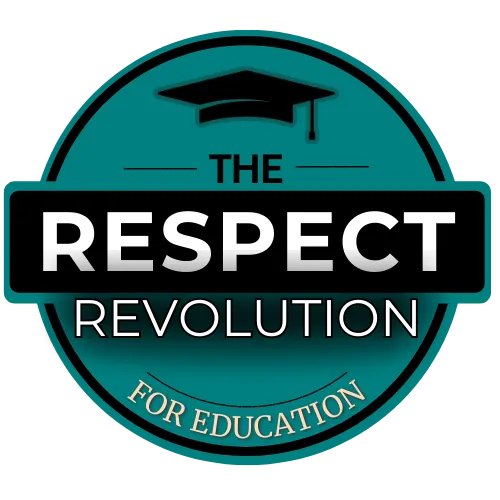
RESOURCE ARTICLE
Tired of High School Students Not Asking Questions? Try THIS Before You Throw in the Towel
Brad Reed | Director | The Respect Revolution | 28 September 2024
How many times have you stood in front of your classroom, finished a lesson, and asked, “Any questions?” only to be met with complete silence? Then, when the assignments roll in, you quickly realize that plenty of students should have asked questions. Sound familiar?
If you're nodding along, you're in the right place. In this post, I’m going to share a simple but powerful change that can transform how comfortable your students feel asking questions—and ultimately, improve the quality of their work.
A Simple Shift, Big Results
My name is Brad Reed, and I help high school teachers overcome classroom management frustrations so they can go from burnout to teaching with confidence in classrooms where students are engaged and thriving. Let me tell you—when I first made this one tiny shift in my questioning approach, I was
floored by the results. Suddenly, my classroom wasn’t silent anymore. Students were asking more—and better—questions than ever before.
What’s the Secret?
Alright, so here’s the small change that makes all the difference. Instead of asking your students, “Do you have any questions?” try asking, “What questions do you have for me?”
It seems almost too simple to work, right? But this slight change in phrasing assumes that your students
will have questions. It shifts the tone from one where students might feel awkward or embarrassed to admit they’re confused, to one that invites curiosity and engagement.
Here’s why this works:
It normalizes questions. By phrasing it this way, you're telling students that it's expected they might have questions, which can ease the fear of feeling “stupid” for asking. It respects different learning styles. We know students learn at different paces and in different ways. Some may need to hear the instructions a second time or have them explained differently. This approach shows respect for those needs and encourages them to seek clarity without shame. It builds trust. Asking “What questions do you have for me?” signals to students that you're in this together—it’s a partnership. You’re essentially saying, “I’m not perfect, and I may not always explain things perfectly, but I’m here to help.”
Try It Out—With Consistency
The key to seeing real results with this approach is to use it consistently. It might feel like you’re pulling teeth at first—especially if your students are used to staying silent—but stick with it. Over time, you’ll likely notice a shift in how comfortable students are asking questions, which will lead to deeper engagement and higher-quality work.
Have You Made a Small Change That Had a Big Impact?
Before we dive deeper, I’d love to hear from you! Have you made a small tweak in your teaching that made a big difference in your classroom? Drop a comment below and share your experience.
Ready to Transform Your Classroom?
If you’re interested in more tips on how to connect with students and improve classroom management, I’ve got something special for you. Grab a free copy of my Quick-Start Guide: BUILDING POSITIVE RELATIONSHIPS WITH HIGH SCHOOL STUDENTS.
Stay Connected for More Tips!
If you found this post helpful, make sure to like, subscribe, and leave a comment. We’ve got more tips—big and small—that will help you transform your classroom into a space where students are eager to engage, learn, and succeed.
See you soon with more strategies to help you thrive in the classroom!

PRIVACY POLICY | TERMS & CONDITIONS | CONTACT US
© COPYRIGHT 2024. THE RESPECT REVOLUTION. ALL RIGHTS RESERVED
Stay connected and join the movement!





